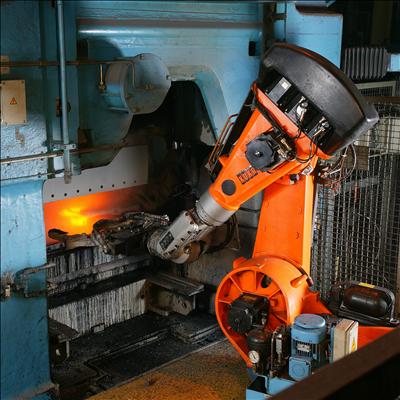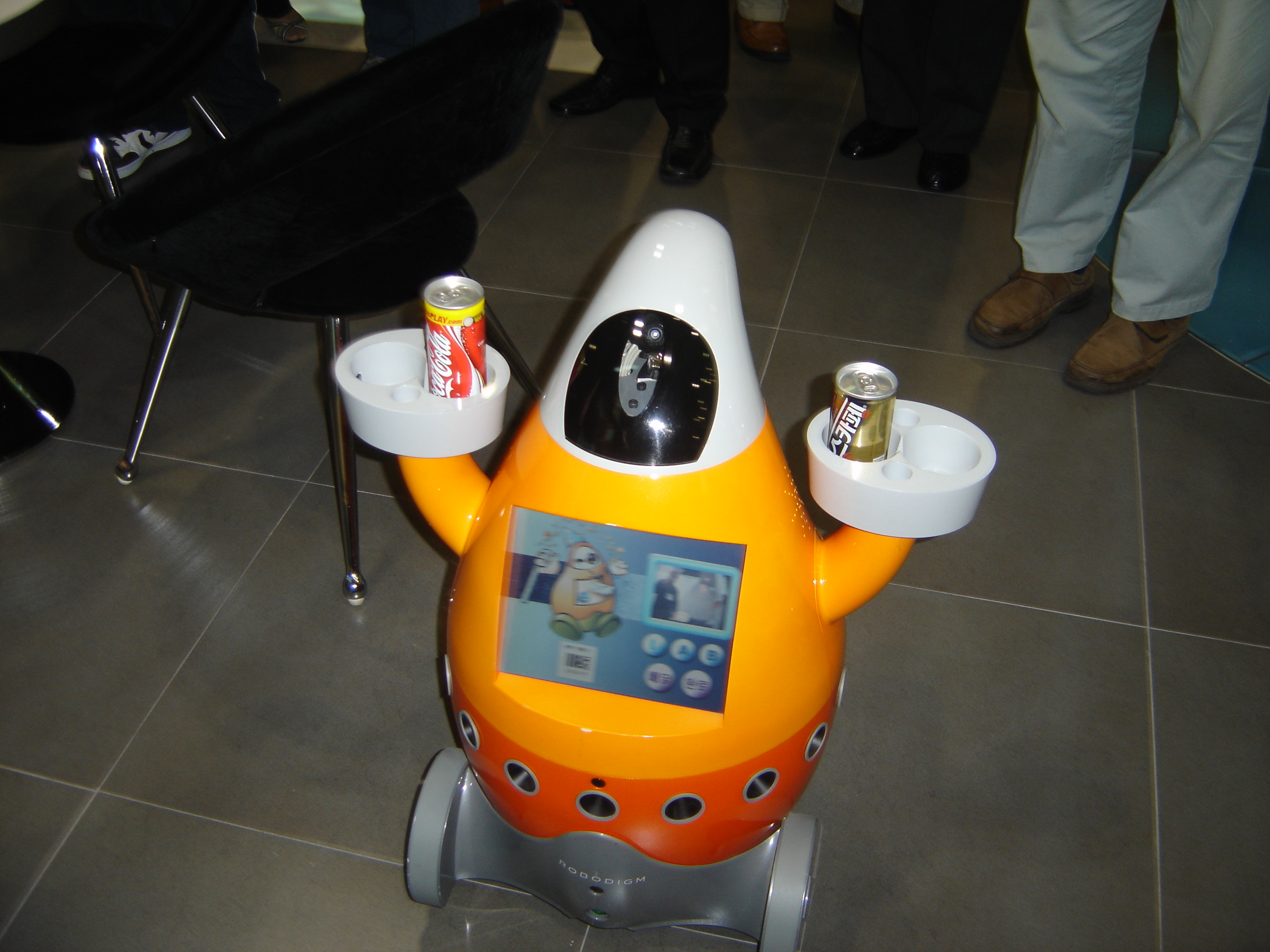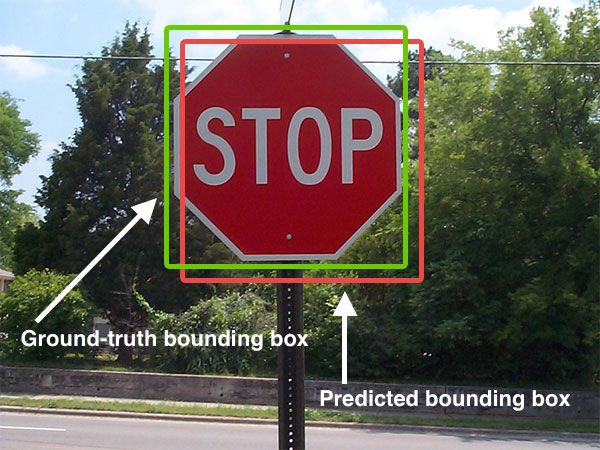|
Robotics
Robotics is an interdisciplinarity, interdisciplinary branch of computer science and engineering. Robotics involves design, construction, operation, and use of robots. The goal of robotics is to design machines that can help and assist humans. Robotics integrates fields of mechanical engineering, electrical engineering, Information engineering (field), information engineering, mechatronics, electronics, bioengineering, computer engineering, control engineering, software engineering, mathematics, etc. Robotics develops machines that can substitute for humans and replicate human actions. Robots can be used in many situations for many purposes, but today many are used in dangerous environments (including inspection of radioactive materials, bomb detection and bomb disposal, deactivation), manufacturing processes, or where humans cannot survive (e.g. in space, underwater, in high heat, and clean up and containment of hazardous materials and radiation). Robots can take any form, b ... [...More Info...] [...Related Items...] OR: [Wikipedia] [Google] [Baidu] |
Robot
A robot is a machine—especially one programmable by a computer—capable of carrying out a complex series of actions automatically. A robot can be guided by an external control device, or the control may be embedded within. Robots may be constructed to evoke human form, but most robots are task-performing machines, designed with an emphasis on stark functionality, rather than expressive aesthetics. Robots can be autonomous or semi-autonomous and range from humanoids such as Honda's ''Advanced Step in Innovative Mobility'' ( ASIMO) and TOSY's ''TOSY Ping Pong Playing Robot'' ( TOPIO) to industrial robots, medical operating robots, patient assist robots, dog therapy robots, collectively programmed ''swarm'' robots, UAV drones such as General Atomics MQ-1 Predator, and even microscopic nano robots. By mimicking a lifelike appearance or automating movements, a robot may convey a sense of intelligence or thought of its own. Autonomous things are expected to proliferat ... [...More Info...] [...Related Items...] OR: [Wikipedia] [Google] [Baidu] |
Industrial Robot
An industrial robot is a robot system used for manufacturing. Industrial robots are automated, programmable and capable of movement on three or more axes. Typical applications of robots include robot welding, welding, painting, assembly, Circular economy, disassembly, Automated storage and retrieval system, pick and place for printed circuit boards, packaging and labeling, Palletizer, palletizing, product inspection, and testing; all accomplished with high endurance, speed, and precision. They can assist in material handling. In the year 2020, an estimated 1.64 million industrial robots were in operation worldwide according to International Federation of Robotics, International Federation of Robotics (IFR). Types and features There are six types of industrial robots. Articulated robots Articulated robots are the most common industrial robots. They look like a Arm, human arm, which is why they are also called robotic arm or Manipulator (device), manipulator arm. Their art ... [...More Info...] [...Related Items...] OR: [Wikipedia] [Google] [Baidu] |
Bio-inspired Robotics
Bio-inspired robotic locomotion is a fairly new subcategory of bio-inspired design. It is about learning concepts from nature and applying them to the design of real-world engineered systems. More specifically, this field is about making robots that are inspired by biological systems, including Biomimicry. Biomimicry is copying from nature while bio-inspired design is learning from nature and making a mechanism that is simpler and more effective than the system observed in nature. Biomimicry has led to the development of a different branch of robotics called soft robotics. The biological systems have been optimized for specific tasks according to their habitat. However, they are multifunctional and are not designed for only one specific functionality. Bio-inspired robotics is about studying biological systems, and looking for the mechanisms that may solve a problem in the engineering field. The designer should then try to simplify and enhance that mechanism for the specific task o ... [...More Info...] [...Related Items...] OR: [Wikipedia] [Google] [Baidu] |
Autonomous Robot
An autonomous robot is a robot that acts without recourse to human control. The first autonomous robots environment were known as Elmer and Elsie, which were constructed in the late 1940s by W. Grey Walter. They were the first robots in history that were programmed to "think" the way biological brains do and meant to have free will.Ingalis-Arkell, Esthe"The Very First Robot Brains Were Made of Old Alarm Clocks" 7 March 2012. Elmer and Elsie were often labeled as tortoises because of how they were shaped and the manner in which they moved. They were capable of phototaxis which is the movement that occurs in response to light stimulus. Historic examples include space probes. Modern examples include self-driving vacuums and cars. Industrial robot arms that work on assembly lines inside factories may also be considered autonomous robots, though their autonomy is restricted due to a highly structured environment and their inability to locomote. Components and criteria of rob ... [...More Info...] [...Related Items...] OR: [Wikipedia] [Google] [Baidu] |
Android (robot)
An android is a humanoid robot or other artificial being often made from a flesh-like material. Historically, androids were completely within the domain of science fiction and frequently seen in film and television, but advances in robot technology now allow the design of functional and realistic humanoid robots. Terminology The ''Oxford English Dictionary'' traces the earliest use (as "Androides") to Ephraim Chambers' 1728 ''Cyclopaedia,'' in reference to an automaton that St. Albertus Magnus allegedly created. By the late 1700s, "androides", elaborate mechanical devices resembling humans performing human activities, were displayed in exhibit halls. The term "android" appears in US patents as early as 1863 in reference to miniature human-like toy automatons. The term ''android'' was used in a more modern sense by the French author Auguste Villiers de l'Isle-Adam in his work '' Tomorrow's Eve'' (1886). This story features an artificial humanlike robot named Hadaly. As said ... [...More Info...] [...Related Items...] OR: [Wikipedia] [Google] [Baidu] |
Domestic Robot
A domestic robot is a type of service robot, an autonomous robot that is primarily used for household chores, but may also be used for education, entertainment or therapy. While most domestic robots are simplistic, some are connected to Wi-Fi home networks or smart environments and are autonomous to a high degree. There were an estimated 16.3 million service robots in 2018. History People began to design the robots for processing materials and construct products, especially during the Industrial Revolution in the period about 1760 to around 1840. This historical event marked a major turning point in history since people's living standard was greatly improved during that period. However, these robots cannot be considered as domestic robots. After the industrial robots were improved rapidly for over a hundred years since the Industrial Revolution, people started to consider the use of robots at home. One of the earliest domestic robots is called "HERO", which was sold during the ... [...More Info...] [...Related Items...] OR: [Wikipedia] [Google] [Baidu] |
Information Engineering (field)
Information engineering is the engineering discipline that deals with the generation, distribution, analysis, and use of information, data, and knowledge in systems. The field first became identifiable in the early 21st century. The components of information engineering include more theoretical fields such as machine learning, artificial intelligence, control theory, signal processing, and information theory, and more applied fields such as computer vision, natural language processing, bioinformatics, medical image computing, cheminformatics, autonomous robotics, mobile robotics, and telecommunications. Many of these originate from computer science, as well as other branches of engineering such as computer engineering, electrical engineering, and bioengineering. The field of information engineering is based heavily on mathematics, particularly probability, statistics, calculus, linear algebra, optimization, differential equations, variational calculus, and complex analysis. ... [...More Info...] [...Related Items...] OR: [Wikipedia] [Google] [Baidu] |
Military Robot
Military robots are autonomous robots or remote-controlled mobile robots designed for military applications, from transport to search & rescue and attack. Some such systems are currently in use, and many are under development. History Broadly defined, military robots date back to World War II and the Cold War in the form of the German Goliath tracked mines and the Soviet teletanks. The MQB-1 Predator drone was when "CIA officers began to see the first practical returns on their decade-old fantasy of using aerial robots to collect intelligence". The use of robots in warfare, although traditionally a topic for science fiction, is being researched as a possible future means of fighting wars. Already several military robots have been developed by various armies. Some believe the future of modern warfare will be fought by automated weapons systems. The U.S. military is investing heavily in the RQ-1 Predator, which can be armed with air-to-ground missiles and remotely o ... [...More Info...] [...Related Items...] OR: [Wikipedia] [Google] [Baidu] |
Science, Technology, Engineering, And Mathematics
Science, technology, engineering, and mathematics (STEM) is an umbrella term used to group together the distinct but related technical disciplines of science, technology, engineering, and mathematics. The term is typically used in the context of education policy or curriculum choices in schools. It has implications for workforce development, national security concerns (as a shortage of STEM-educated citizens can reduce effectiveness in this area) and immigration policy. There is no universal agreement on which disciplines are included in STEM; in particular whether or not the ''science'' in STEM includes social sciences, such as psychology, sociology, economics, and political science. In the United States, these are typically included by organizations such as the National Science Foundation (NSF), which deals with all matters concerning science and new discoveries in science as it affects development, research, and innovations, the Department of Labor's O*Net online database ... [...More Info...] [...Related Items...] OR: [Wikipedia] [Google] [Baidu] |
Control Engineering
Control engineering or control systems engineering is an engineering discipline that deals with control systems, applying control theory to design equipment and systems with desired behaviors in control environments. The discipline of controls overlaps and is usually taught along with electrical engineering and mechanical engineering at many institutions around the world. The practice uses sensors and detectors to measure the output performance of the process being controlled; these measurements are used to provide corrective feedback helping to achieve the desired performance. Systems designed to perform without requiring human input are called automatic control systems (such as cruise control for regulating the speed of a car). Multi-disciplinary in nature, control systems engineering activities focus on implementation of control systems mainly derived by mathematical modeling of a diverse range of systems. Overview Modern day control engineering is a relatively new fiel ... [...More Info...] [...Related Items...] OR: [Wikipedia] [Google] [Baidu] |
Technology
Technology is the application of knowledge to reach practical goals in a specifiable and reproducible way. The word ''technology'' may also mean the product of such an endeavor. The use of technology is widely prevalent in medicine, science, industry, communication, transportation, and daily life. Technologies include physical objects like utensils or machines and intangible tools such as software. Many technological advancements have led to societal changes. The earliest known technology is the stone tool, used in the prehistoric era, followed by fire use, which contributed to the growth of the human brain and the development of language in the Ice Age. The invention of the wheel in the Bronze Age enabled wider travel and the creation of more complex machines. Recent technological developments, including the printing press, the telephone, and the Internet have lowered communication barriers and ushered in the knowledge economy. While technology contributes ... [...More Info...] [...Related Items...] OR: [Wikipedia] [Google] [Baidu] |
Computer Science
Computer science is the study of computation, automation, and information. Computer science spans theoretical disciplines (such as algorithms, theory of computation, information theory, and automation) to practical disciplines (including the design and implementation of hardware and software). Computer science is generally considered an area of academic research and distinct from computer programming. Algorithms and data structures are central to computer science. The theory of computation concerns abstract models of computation and general classes of problems that can be solved using them. The fields of cryptography and computer security involve studying the means for secure communication and for preventing security vulnerabilities. Computer graphics and computational geometry address the generation of images. Programming language theory considers different ways to describe computational processes, and database theory concerns the management of repositories ... [...More Info...] [...Related Items...] OR: [Wikipedia] [Google] [Baidu] |











